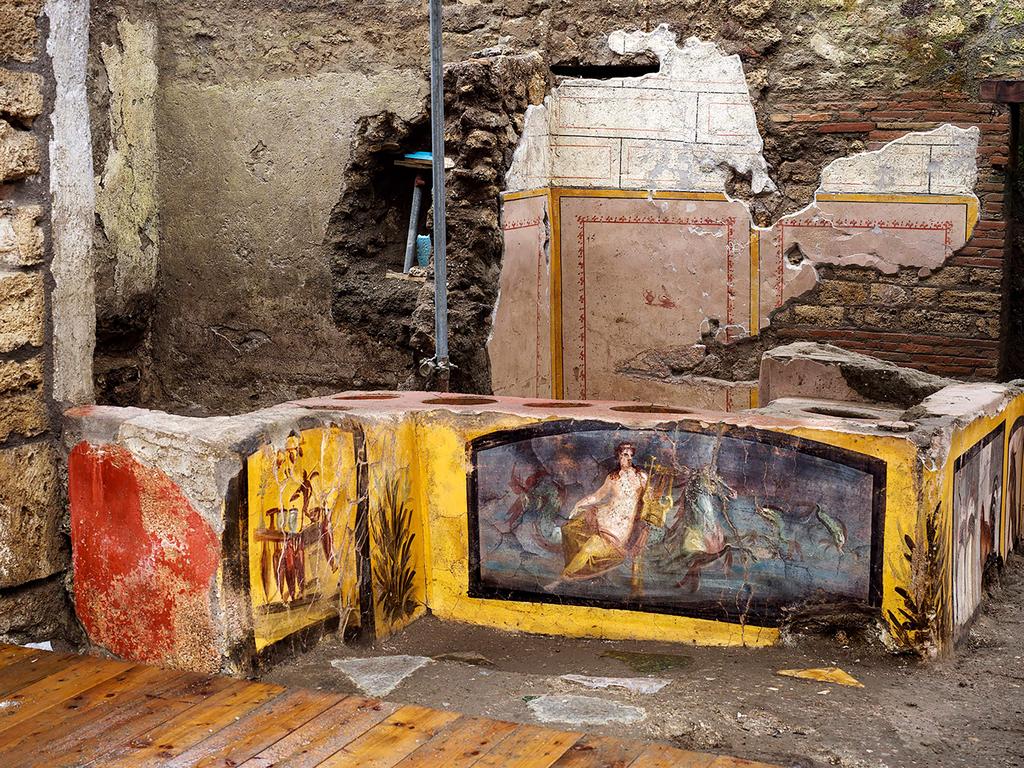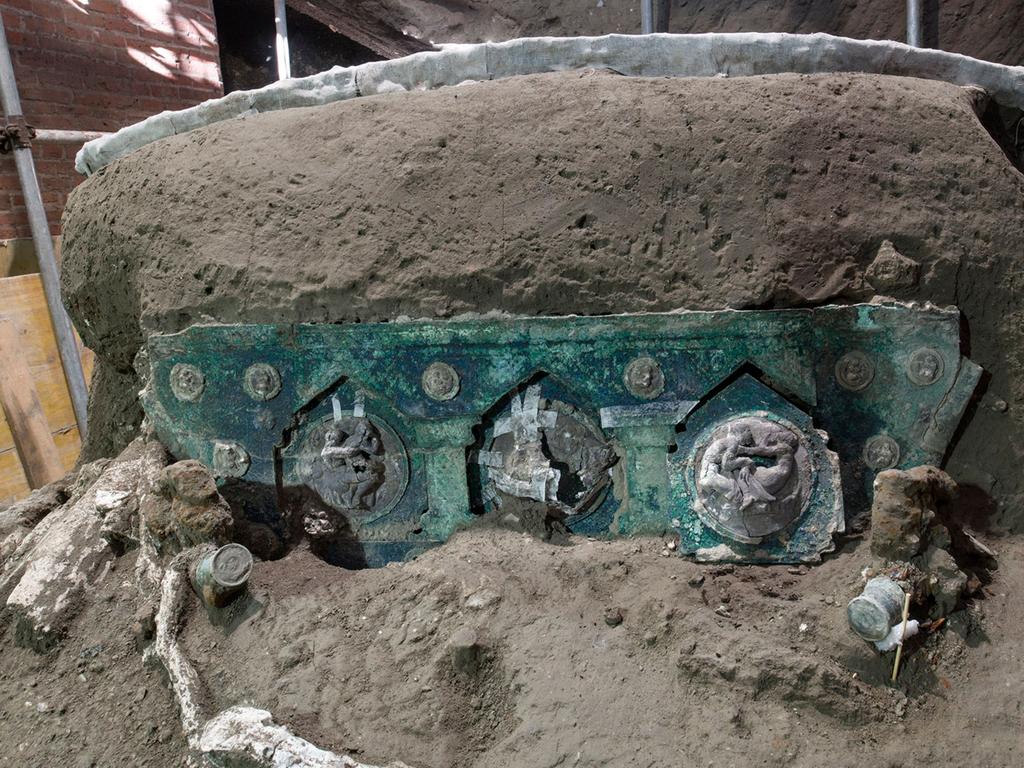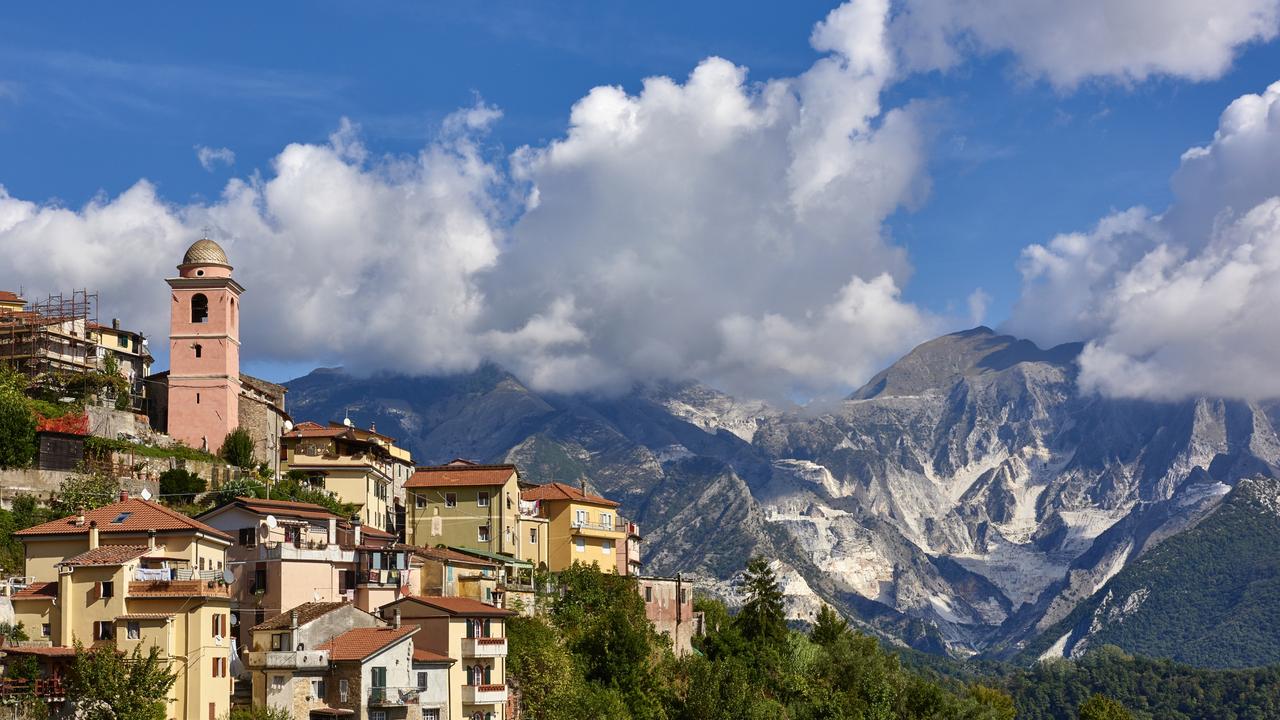Pompeii’s 2000 year old fast food restaurant to open to public
An ancient fast food counter, pulled from beneath tonnes of volcanic ash, will open to the public almost 2000 years after it was destroyed.
An ancient Roman fast food counter that was unearthed in Pompeii last year will open to the public almost 2000 years after the catastrophic volcanic eruption that destroyed the city.
The “thermopolium,” which is Latin for “hot-drink counter” and similar to a modern-day takeaway shop, was discovered under tonnes of volcanic ash in the Pompeii archaeological park in December.
Before Pompeii was destroyed in the eruption of Mount Vesuvius in the year 79, the counter was used to serve pork, fish, beef, snails and other traditional Roman dishes to diners.

Colourful frescoes on the well-preserved counter show the animals that would have been on offer, typically grilled or roasted, and traces of food in earthenware pots were also found at the site.
Archaeologists also found a jar filled with crushed fava beans, which was used to modify the taste of wine.

“As well as bearing witness to daily life in Pompeii, the possibilities to analyse afforded by this thermopolium are exceptional because for the first time we have excavated a site in its entirety,” said Massimo Osanna, director general at the Archaeological Park of Pompeii said of the discovery.
The snack bar will be open for visitors to view from August 12, the park said.

Pompeii, near Naples, was submerged in ash after Mount Vesuvius’ eruption and is Italy’s second most-visited tourist attraction after Rome’s Colosseum, welcoming nearly four million tourists in 2019.
Ongoing archaeological works at the 44ha excavation site continue to produce remarkably well-preserved relics.
Also last year, officials said the remains of two victims of the eruption were unearthed at a grand villa on the fringes of the city.
“Two skeletons of individuals caught in the fury of the eruption have been found,” the officials at the said.
The researchers believe the figures are those of a young slave and a richer older man, aged around 40 and presumed to be his owner, based on the vestiges of clothing and their physical appearance.



